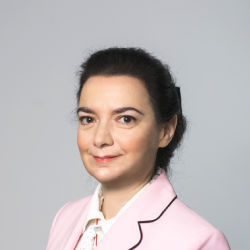Tatarstan residents decide not to postpone their lives for later
Residents of the republic spend more than the average Russians

The growth of non-food retail in Tatarstan accelerated to 23.2% in the first quarter of 2024. Food retail is growing less dynamically — by 7.5% compared to the same period last year. In general, the turnover of the retail market in the first three months increased by 15.7% compared to last year — to 362.3 billion rubles. This is more than the average in Russia, where the consumer sentiment index, according to Rosstat estimates, rose to its highest level since 2013. What is the reason for consumer optimism, or are these rather signs of “consumer pessimism” against the background of high inflation and a desire to buy for the future — in the material of the analytical service of Realnoe Vremya.
Consumer sentiments tare at their maximum
In the first quarter of 2024, retail trade turnover in Tatarstan increased by 15.7% compared to the corresponding period last year and reached 362.2 billion rubles. At the same time, the growth of food retail amounted to 7.5% (approximately at the level of last year), and the growth of non-food retail broke records — 23.2% (there was a drop last year).
The turnover of trade in food products reached 161.4 billion rubles, and the turnover of trade in non-food products — 200.8 billion rubles. The volume of retail trade turnover per capita in Tatarstan increased from 76,145 to 90,510 rubles.
Main indicators of consumer market of Tatarstan in first quarter of 2024
INDICATOR | JANUARY — MARCH 2023 | JANUARY — MARCH 2024 | |
1 | Volume of retail trade turnover | 304.7 billion rubles | 362.2 billion rubles |
2 | Index of physical volume of retail trade turnover, compared to the corresponding period last year | 99.7% | 115.7% |
3 | Volume of retail trade in food products, including beverages, and tobacco products | 114.1 billion rubles | 161.4 billion rubles |
4 | Index of physical volume of retail food trade turnover, compared to the corresponding period last year | 107.3% | 107.5% |
5 | Volume of retail trade in non-food products | 160.6 billion rubles | 200.8 billion rubles |
6 | Index of physical volume of retail trade in non-food products | 93.8% | 123.2% |
7 | Retail trade turnover volume per capita | 76 145 rubles | 90 510 rubles |
According to Tatarstan Statistics
The number of trade enterprises increased from 16,304 to 16,458. The availability of retail space per capita increased from 905.3 to 948.7 sq. m. The number of catering enterprises is also growing — from 5,530 to 5,645, and the number of consumer services facilities is decreasing — from 7,457 to 6,589.
Consumer market enterprises and availability of retail space
INDICATOR | JANUARY — MARCH 2023 | JANUARY — MARCH 2024 | |
1 | Number of trading enterprises | 16.304 | 16.458 |
2 | Availability of retail space per 1000 inhabitants | 905.3 sq. m . | 948.7 sq. m. |
3 | Number of catering establishments | 5,530 | 5,645 |
4 | Number of public service facilities | 7,457 | 6,589 |
According to Tatarstan Statistics
In general, the dynamics of catering growth is slowing down (+4.5% instead of +19%), but the market continues to grow in terms of volumes. The growth of consumer services sector turned out to be almost at zero (+0.9%).
Turnover of public catering market and household services
INDICATOR | JANUARY — MARCH 2024 | JANUARY — MARCH 2024 | |
1 | Volume of turnover of public catering | 15.6 billion rubles | 17.8 billion rubles |
2 | Index of physical volume of public catering turnover | 119.0% | 104.5% |
3 | Volume of household services to the population | 14.6 billion rubles | 16.7 billion rubles |
4 | Index of physical volume of household services to the population | 103.3% | 100.9% |
According to Tatarstan Statistics
Rosstat recorded another sharp increase in the consumer sentiment index in the first quarter of 2024 to the highest level since 2013 — in the history of observations. Earlier, in the March reports of the Bank of Russia “What trends say” and on the regional economy, there was also a rapid increase in consumption. “The increase in real incomes and the inertia of deferred demand continued to keep household spending at a high level. At the same time, the propensity of the population to save began to increase, which manifested itself in a stable inflow of funds from the population for term deposits," the authors of the report on the regional economy recorded.
Spending is spurred by inflation and the fear of a weakening ruble

Such high growth rates are partly explained by the effect of the low base of the first quarter of 2023. Then the turnover of non-food retail decreased significantly relative to the first quarter of 2022: for Tatarstan — by 6.2%, for Russia as a whole — by 8.1%.
Consumption growth at the beginning of the year remained very strong due to the growing incomes of the population. According to Rosstat, real disposable income increased by 5.8% YoY in the first quarter. This is facilitated by the increasing tension in the labour market — in March, unemployment updated another historical low. According to the latest available Rosstat data for February, the growth of the average accrued salary in nominal terms accelerated to 19.3% yoy (December and January 16.6% yoy), and in real terms — to 10.8% yoy.
According to the Central Bank, “the growth of incomes, including salaries, allows citizens to save more and spend more at the same time”. As a result, even with an increase in the savings rate, consumption continues to grow rapidly. Besides, consumption was supported by accelerated growth in consumer lending in March. According to the Central Bank, the consumer sentiment index decreased slightly in April compared to March, but remained near the historical maximum.
Olga Belenkaya notes that Rosstat provides data on the growth of retail trade turnover in real terms, that is, they should already be “cleared” of inflation.
“As you know, the inflation perceived and expected by the population traditionally exceeds the data of Rosstat. Although inflation expectations of the population have been declining for the fourth month in a row, they are still high," Belenkaya says. “Increased inflation expectations, fears of a weakening of the ruble circulating in the media after the presidential elections in March, expectations of rising car prices after changes in the methodology for determining scrap collection from April 1 could contribute to strong consumer activity in the 1st quarter of 2024.”
The analyst believes that the growth of consumer activity will gradually slow down, although it will remain high at the end of the year. “Despite the scarce labour market, the ability of enterprises to continue to increase salaries at the same pace is declining," she said. “The tight monetary policy of the Bank of Russia (which results in high interest rates on deposits and market loans), tightening macroprudential regulation, along with limiting the availability of concessional lending programs, should also contribute to slowing the growth of retail lending and consumption," Belenkaya forecasts.
E-commerce has contributed to the growth of the average check

“To some extent, the growth in retail turnover may also be due to inflationary factors, but we also note the influence of price factors: if they are not so clearly manifested in food retail (grocery retailers invest heavily in prices), then in non-food retail there is a more noticeable tendency to shift increased costs to logistics, imported materials components and labour costs for the consumer," the expert notes.
“There is a possibility that increasing the penetration of Internet sales may provide additional growth incentives for non-food retail — the convenience and accessibility of this service have a positive effect on the average check," says Maria Kolomiets.
Number of new credit cards increased by 12%

The banker expects the growth of this segment to continue to 12-15% per year. At the same time, at the beginning of the second quarter, the regulator raised the forecast for consumer credit growth for 2024. Thus, the Central Bank of Russia noted that the unsecured loans market could grow by 8-10% this year instead of the previously predicted 3-8%. At the same time, the consumer credit market grew by 15.7% for the whole of 2023.
In the first quarter, the growth of the consumer loan portfolio amounted to about 3%. Thus, the cooling of the consumer lending market is indeed expected this year, but at a slightly slower pace.